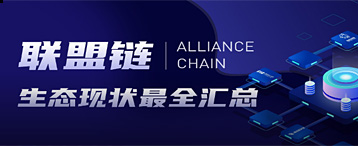-
What is the difference between Web 2.0 and Web 3.0?
 joint
joint 2022-09-21
2022-09-21 4061
4061 NEWS
NEWS
-
Summary:Web3 has recently exploded into mainstream consciousness, with industry leaders in the traditional tech space and blockchain ecosystem offering a wide range of views on the past and future of the Internet.
Web3 has recently exploded into mainstream consciousness, with industry leaders in the traditional tech space and blockchain ecosystem offering a wide range of views on the past and future of the Internet. Especially after Jack Dorsey's comments in December 2021, which caused an outcry in the cryptocurrency world. Ts valuation will be one of the most controversial topics in 2022, especially given Jack Dorsey's comments in December, which caused a stir in the cryptocurrency industry.
What is Web 2.0?
Web 2.0, sometimes called Web 2, is interactive and social networking.
Web2 often contains programs designed to make it easy for anyone to become a creator, since previous versions of the Internet were dominated by developers who were the main players in content creation.
The key end-user benefits of Web2 include user-generated content, ease of use, interactive culture, direct user engagement, and interoperability (compatibility with other goods, systems, and devices).
For the first time, anyone can generate any kind of material, submit videos or photos, write and publish books, comment on other people's posts, and make them available to millions of people. Social media networks have been created, and they will continue to be the stars of the Internet for many years to come.
Thanks to the innovative user friendly experience, a new communication method is possible. In return for consumers' personal data, companies that provide information and communication platforms are starting to flourish. YouTube, Facebook, and Twitter are just some of the most famous and profitable Web2 companies.
Dynamic networks that increase social and cooperative ties are welcome anywhere on the planet. However, there is a catch: in return for direct participation in the network, you must provide personal and private data.
What is Web 3.0?
Web3 is a vague phrase that can mean different things to different people. It envisions an Internet that relies less on big companies like Google or Facebook and more on decentralized networks. The goal behind it is to democratize the Internet, as opposed to the current corporatization, in which these large corporations effectively rule the web.
Web 3.0 will rely on blockchain technology as well as artificial intelligence in order to remove the monopoly of the major tech companies on the Internet and restore it to ordinary people. While it's a bit utopian, it's an attractive concept for anyone who cares about the power of big companies like Meta(Facebook) and their ambitions to control how people experience the Internet, especially since much of the technology required for Web3 is still in its infancy.
Differences between Web 2.0 and Web 3.0 standards
While sharing material or following communities, Web 2.0 also leverages read-write networks, Web applications, blogs, viral media, rich media, tagging, and Folksonomy. The Semantic Web, widgets, drag-and-drop mash-ups, economics or user behavior, user interaction, advertising, personal attention, and the integration of dynamic materials are all part of the Web 3.0 standard.
Web 2.0 supports data sharing, and good examples of Web 2.0 applications include Blogger, Facebook, Youtube, and more. The Semantic Web 3.0 approach allows users to interact with widgets and knowledge sources such as DBpedia and YAGO. Web 3.0 clearly has a bright future as it provides users with personalized help and data tailored to their specific needs.
Will artificial intelligence be used to extend Semantic Web concepts in Web 3.0? Much research is currently underway to produce software that uses reasoning based on intelligent agents and descriptive logic. These programs use a set of rules to carry out reasoning and logical processes, expressing logical connections between data on the Internet and its ideas.
The future of the Web3
In fact, both sides of the Web2 vs. Web3 debate have a role to play in the future. Instead of betting on which battleship will sink the other, maybe we can embrace the better features of Web3 that address some of the shortcomings of Web2. After all, Web3 is just another important part of the final metaverse.
Web3 has the potential to improve the Internet, and the resistance we've seen so far won't stop it. Trying to stop an outdated concept or stifle the entrepreneurial spirit of the global movement, people who may grow billion-dollar companies, is unlikely to succeed.
Disclaimer:As an open information publishing platform, shilian only represents the author's personal views and has nothing to do with shilian. If the article, picture, audio or video contains infringement, violation or other inappropriate remarks, please provide relevant materials and send it to: 2785592653@qq.com.
Hint:The information provided on this site does not represent any investment suggestion. Investment is risky, and you must be cautious when entering the market.
ShilianFan group:Provide the latest hot news, airdrop candy, red envelopes and other benefits, WeChat: rtt4322.
















